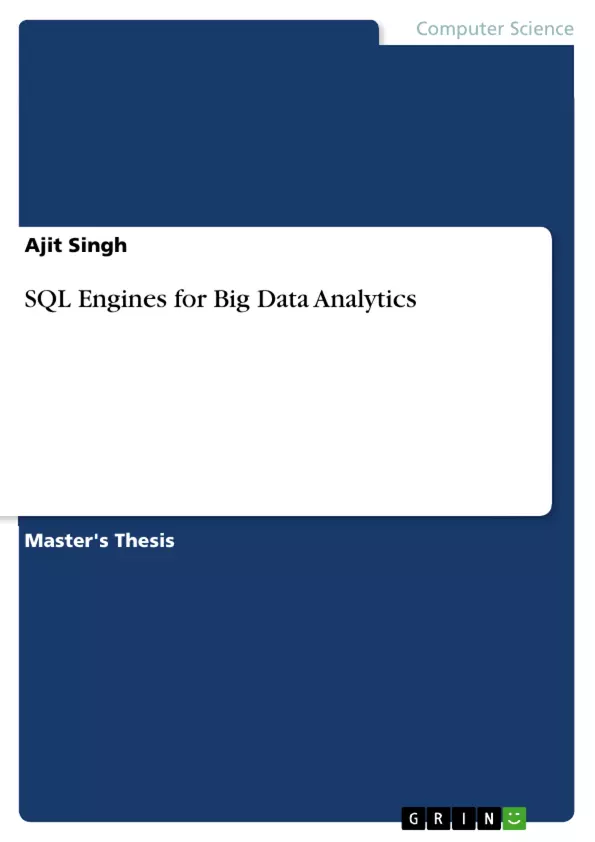This book aims to describe how data analytics works for big data and how they are used in business. It gives an overview of existing technologies and ap-proaches to building data analytics infrastructures. It also defines points that should be taken into consideration while choosing the most suitable software solution for a particular use case.
The research is done by studying architectural principles of big data sys-tems and investigating the market of data analytics software. The result of this work is a composite report including comparison of several technologies and a list of criteria considered. The final report can be used as a guideline for choosing the most suitable technology for implementing an analytical platform in a broad variety of organizations.
With a growing amount of data generated, their changing and evolving, the concept of big data has become incredibly popular in last years. It provides a set of new approaches and techniques allowing to work e ciently with huge volumes of records.
Nowadays, information is one of the most important resources; it can help with decision making and business processes optimization. However, to get actual insights and unlock a potential of data, it is necessary to process them and discover the information hidden inside it which is a goal of data analytics. Data analytic platforms allow to manipulate with raw data in order to find out what exactly they contain. These systems are complex and includes multiple components therefore their designing requires comprehensive analysis of available options.
Inhaltsverzeichnis (Table of Contents)
- Preface
- Introduction
- What is big data
- How did the big data concept appear
- What is big data
Zielsetzung und Themenschwerpunkte (Objectives and Key Themes)
This book aims to provide a comprehensive overview of big data analytics and how they are applied in business. It explores existing technologies and approaches for building data analytics infrastructures, offering guidance on selecting the most suitable software solutions for various use cases. The research delves into the architectural principles of big data systems and examines the market of data analytics software.
- Exploring the concept of big data and its emergence.
- Analyzing the architecture of big data analytics systems.
- Comparing various data analytics software solutions.
- Defining criteria for selecting the most suitable data analytics technology.
- Providing a guide for implementing analytical platforms in different organizations.
Zusammenfassung der Kapitel (Chapter Summaries)
- Preface: This chapter provides a concise introduction to the topic of big data analytics, highlighting its growing importance in the modern world. It emphasizes the need for efficient data processing and analysis to extract valuable insights from the vast amount of data being generated. The chapter also outlines the scope and objectives of the book.
- Introduction: This chapter delves into the concept of big data, discussing its characteristics, such as volume, velocity, and variety. It explores the historical development of data storage and processing, highlighting the significant growth of data generation in recent years. The chapter also explains the importance of leveraging data analytics to gain valuable insights and optimize business operations.
- What is big data: This chapter provides a detailed explanation of the concept of big data, including its characteristics and its role in modern business. It explores the historical development of data storage and processing, highlighting the significant growth of data generation in recent years. The chapter also discusses the challenges and opportunities associated with big data.
- How did the big data concept appear: This chapter explores the historical development of data storage and processing, tracing the evolution from early methods like tally sticks to modern digital systems. It highlights the significant growth of data generation in recent years and the emergence of the concept of big data.
Schlüsselwörter (Keywords)
The core focus of this book lies in big data analytics, data analytics systems, SQL engines, data processing, data storage, data infrastructure, software solutions, and market analysis. The text delves into the architecture of big data systems, examining various software options and their suitability for different use cases. The analysis involves comparing multiple technologies and defining criteria for effective selection, aiming to provide a practical guide for implementing data analytics platforms in diverse organizations.
- Arbeit zitieren
- Ajit Singh (Autor:in), 2018, SQL Engines for Big Data Analytics, München, GRIN Verlag, https://www.grin.com/document/489838



